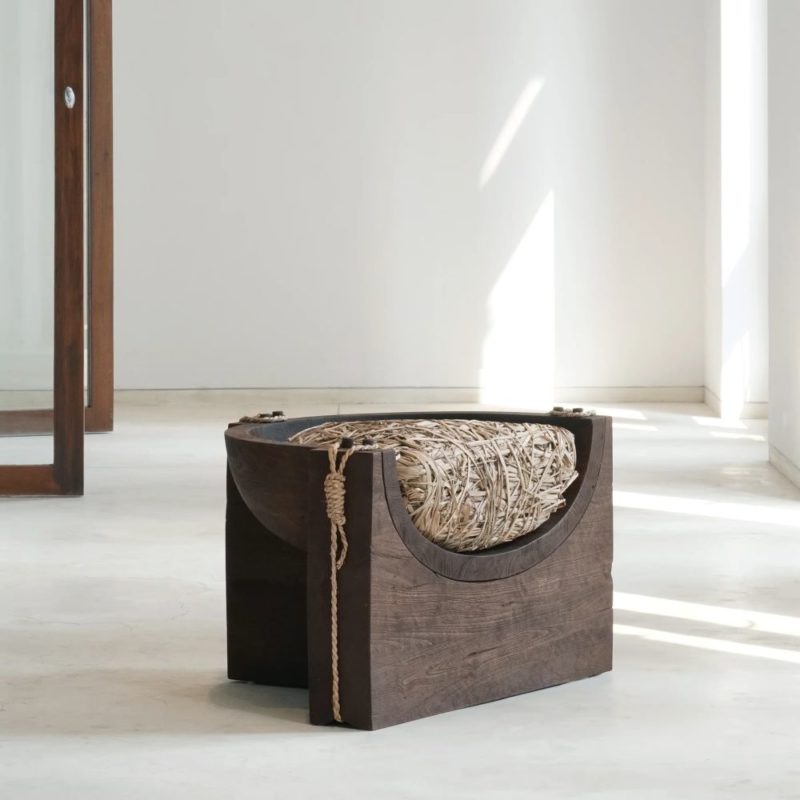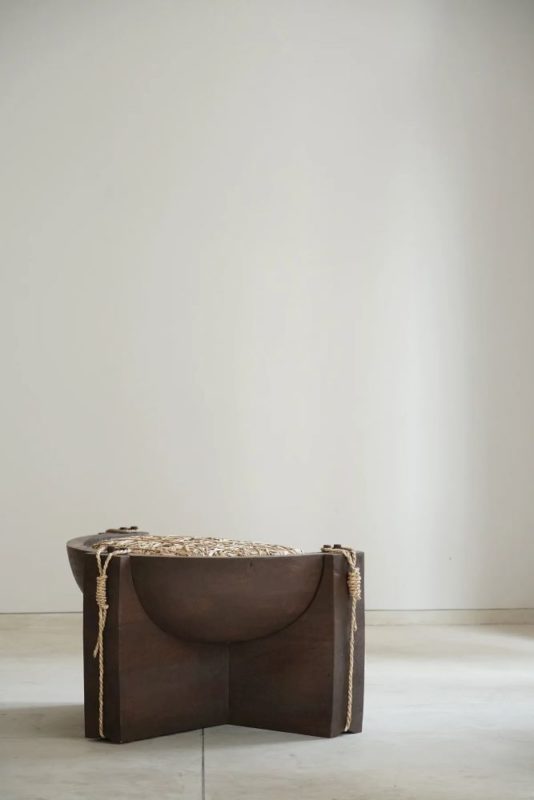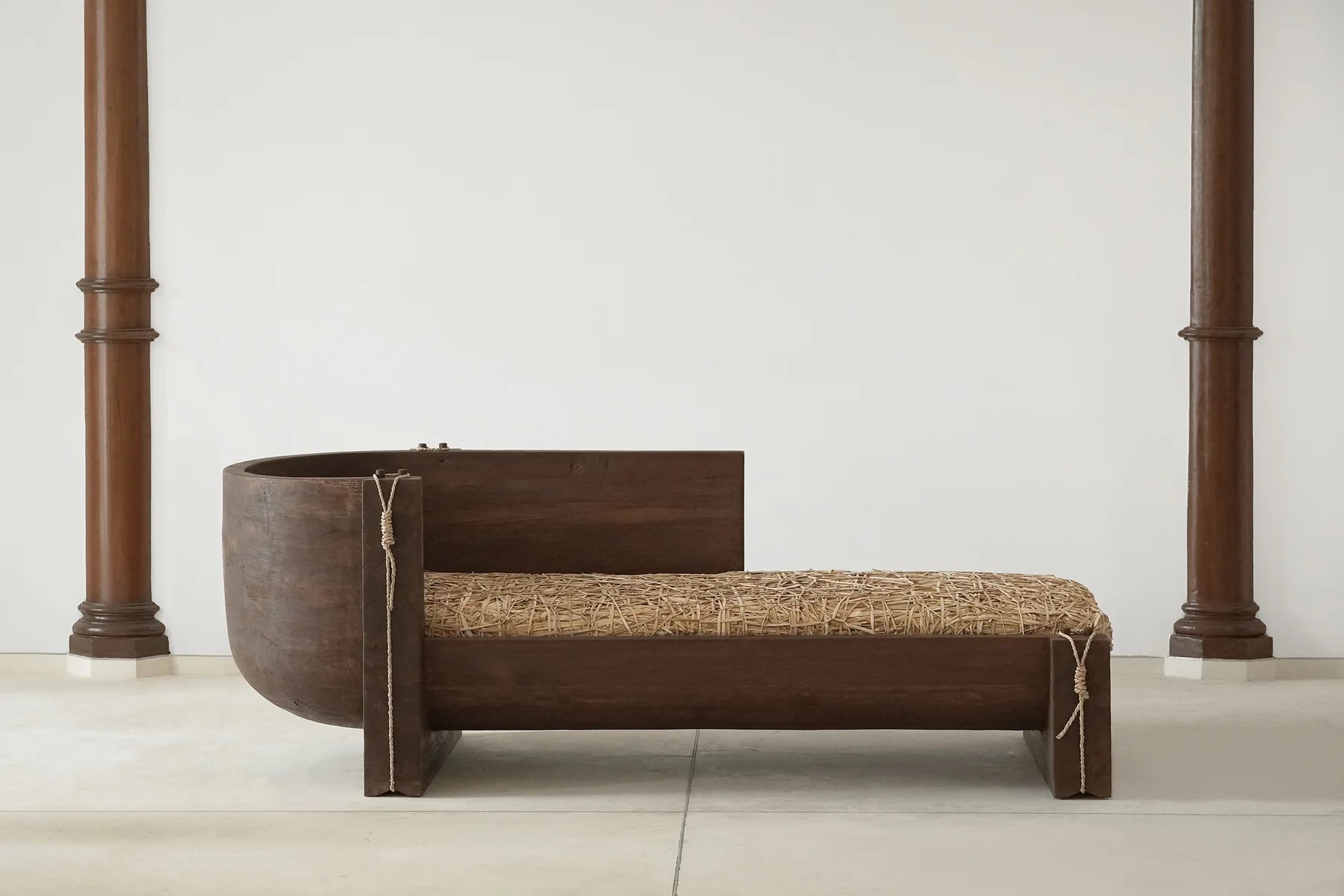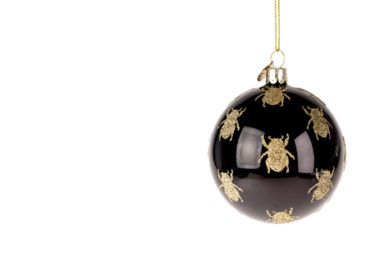Diplômée de la Design Academy d’Eindhoven, Valériane Lazard a suivi une formation rigoureuse en design de produits et d’intérieur. Ses recherches pour sa collaboration avec æquō ont commencé dans un livre rare et très apprécié, The Cave Temples of India, publié pour la première fois en 1880 et écrit par James Fergusson, un planteur d’indigo d’origine écossaise. C’est là qu’elle a découvert des dessins en coupe de Bedsa, les monuments bouddhistes taillés dans la roche près de Pune, et d’Ajanta, les célèbres grottes près d’Aurangabad datant du IIe siècle, qui ont inspiré de nombreux architectes contemporains. Les formations monumentales qu’elle a découvertes ont inspiré les proportions creusées de cette chaise et de ce lit de jour – il s’agit de deux structures massives en bois de teck, sculptées à la main avec de grands vides par des artisans de Bangalore. D’une légèreté qui contraste avec la forme monolithique, un coussin et un matelas ont fait l’objet d’une attention égale lors de leur développement.

A graduate of the Design Academy of Eindhoven, Valériane Lazard had a rigorous training in product and interior design. Her research for her collaboration with æquō began in a rare, highly regarded book, The Cave Temples of India, which was first published in 1880 and authored by Scottish-born indigo planter James Fergusson. It is here she discovered section drawings of Bedsa, the Buddhist rock- cut monuments near Pune, and of Ajanta, the well known caves near Aurangabad dating from the 2nd century that have inspired many contemporary architects. The monumental formations she discovered informed the hollowed proportions of this chair and daybed – they are both massive structures of teak wood, hand carved with great voids by craftsmen in Bangalore. With a lightness that is in contrast to the monolithic form, a cushion and mattress was given equal thought in its development.
En se référant au livre Crafts of India : Handmade in India, édité par Aditi Ranjan et MP Ranjan, Lazard a découvert par hasard la technique d’emballage du riz mooda. Ce coussin de paille cordée a été créé dans le village rural de Gadag, dans l’État du Karnataka. À l’origine, le mooda était utilisé pour le transport dans les rizières. Choisis pour leur esthétique primitive qui complète la chaise et le lit de jour sculptés, les coussins donnent l’illusion d’être un lit de paille désordonné mais sont en fait méticuleusement fabriqués pour remplir parfaitement les vides.


Using the book Crafts of India: Handmade in India, edited by Aditi Ranjan and MP Ranjan, as her reference, Lazard happened upon the technique of mooda rice packaging. The roped straw pillow was created in the rural village of Gadag in Karnataka. Originally, mooda was made for transportation within paddy fields. Selected for its primitive aesthetics that complement the carved chair and daybed, the cushions give the illusion of being a haphazard bed of straw but are in fact meticulously crafted to perfectly fill the voids.









Qu'en pensez-vous ?